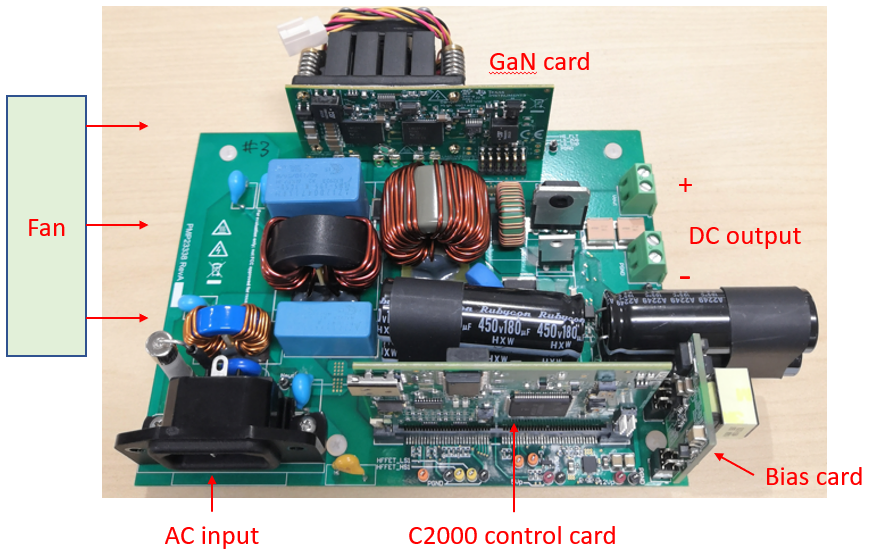TIDT369B November 2023 – July 2024
3.3 Start-Up Sequence
 Figure 3-1 Test setup
Figure 3-1 Test setupStart-up sequence:
- Check GaN card, C2000 control card and Bias card are plugged in correctly and tightly
- Use a fan for cooling during test
- Connect a high voltage load to DC output, set load to 0.1A
- Connect AC source to AC input
- Use current probe to monitor AC input current, use voltage meter to measure DC output voltage
- Set AC output at 115V/60Hz, turn on AC, you see DC output voltage is regulated at about 385V
- Graduate increase load. Full load: 1800W@115VAC, 3600W@230VAC